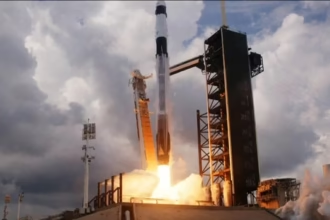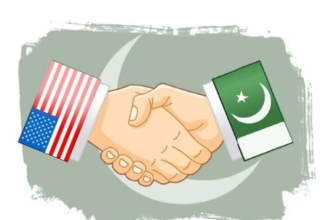Few agreements in modern history have been tested as relentlessly as the Indus Waters Treaty (IWT). Born out of mistrust in 1960, when Pakistan and India were barely a decade into independence, it was not expected to survive wars, hostilities, and shifting political winds. Yet, more than sixty years later, it stands tall—not only as the backbone of Pakistan’s water security but as a rare reminder that cooperation can endure even when politics fail.
A Unique Framework in a Divided Region
The IWT divided the Indus River system with unusual clarity: Pakistan was given rights over the three Western Rivers, i.e., Indus, Jhelum, and Chenab, while India took control of the Eastern tributaries—Ravi, Beas, and Sutlej. This arrangement, coupled with a significant financial settlement and international backing, ensured Pakistan could build replacement canals and reservoirs to utilize the waters of the Western Rivers so as to keep its farmlands alive, which were dependent on the flows of the three Eastern Rivers.
What makes the Treaty unique is not just the division of rivers but the institutions it created. A Permanent Indus Commission, with commissioners from both sides, has been meeting almost regularly to exchange data and endeavor to resolve disputes. Where disagreements persist, they have been referring the matter to Neutral Experts or even international arbitration. At a time when many river disputes across the world remain mired in political deadlock, the Indus system has kept dialogue alive.
Built for the Future
The IWT was never a rigid agreement; Article VII of the Treaty commits both parties to cooperate in future engineering works, hydrological studies, and joint flood management. Its dispute settlement mechanism—through Indus Commissioners and, if needed, referring to Neutral Experts or to arbitration—remains a sophisticated model for avoiding conflict through peaceful dispute resolution in international law.
Equally important, Article XII allows modifications “by a duly ratified treaty concluded for that purpose between the two Governments,” ensuring the Treaty can deliver its intended purpose in a cooperative spirit to incorporate the arrangements required to honour the rights and obligations of the parties owed to each other. This forward-looking design explains why it remains relevant more than six decades later. This flexibility has allowed Pakistan to repeatedly bring its concerns about Indian projects before international experts rather than the battlefield. It is this structure, not political goodwill alone, that has helped the Treaty endure through some of South Asia’s darkest moments.
Climate Change: A New Test of an Old Agreement
Today, the greatest challenge is no longer simply how water is shared, but how efficiently and peacefully the available water is to be shared. Himalayan glaciers are melting faster than ever, monsoons are becoming more unpredictable, and the Indus Basin—lifeline for nearly 300 million people in Pakistan and India—is under severe stress, a phenomenon that was not present when the Treaty was signed in 1960.
However, even with this phenomenon, the Treaty is not outdated. On the contrary, it may be one of the best tools the region already has. By committing both sides to exchange data, coordinate projects, and resolve disputes peacefully, the IWT can evolve into a climate adaptation framework. Strengthening the Indus Commission, enhancing real-time information sharing, conducting joint environmental impact assessments, and developing joint disaster response mechanisms, among others, can be natural extensions of what was already agreed more than six decades ago.
Why Scrapping the Treaty Would Be a Mistake
In recent years, voices in India have called for the IWT to be scrapped or suspended. Such rhetoric may play well in domestic politics, but it is dangerous and impractical. This fact needs to be understood because the division of the Indus Basin into two halves as a part of the Treaty’s bargain has, on one hand, settled the vital contentious issues between the two countries, but on the other, has altered the dynamics of the Indus Basin in a manner which does not allow to undo the Treaty.
Besides, the Treaty is a legally binding international agreement, registered with the United Nations, and cannot be revoked unilaterally. In this backdrop, any attempt to undo or scrap the Treaty would set a dangerous precedent but would also tantamount to turning water into a weapon, which would not only endanger millions of lives downstream but also tarnish India’s reputation globally.
Pakistan, for its part, has scrupulously respected its obligations, even allowing India unhindered use of the Eastern Rivers despite its own mounting water stress. Its disputes over Indian projects on the Western Rivers have been pursued through legal channels, not retaliation. This proves a simple truth: the problem is not the Treaty, but the erosion of cooperative spirit, particularly on the Indian side.
A Precedent for the World
As climate change tightens its grip, rivers are becoming flashpoints across the globe. From the Nile to the Mekong, international water law experts increasingly argue that transboundary treaties must evolve into climate adaptation instruments. The IWT already contains legal and institutional flexibility to address all emerging situations. Such flexibility can be seen, inter alia, where the Treaty defines the purpose and functions of the Indus Commission as to establish and maintain cooperative arrangements for the implementation of this Treaty and to promote cooperation between the Parties in the development of the waters of the rivers. Such flexibility shows that even bitter rivals can agree on a fair division of resources if the framework is robust. For developing countries facing similar disputes, the IWT is not just a South Asian pact—it is a global precedent for peaceful water governance, leading to coexistence rather than to embrace perpetual conflict.
The Road Ahead
For Pakistan, the stakes could not be higher. Nearly 90 percent of its agriculture depends on the waters of the Indus Basin; therefore, any disruption in the natural pattern of the flows of the rivers allocated to Pakistan would be unthinkable. Strengthening the institution of the Permanent Indus Commission, investing in data-driven cooperation, and keeping disputes within the Treaty’s legal framework are not just policy options—they are matters of strategic interest for both India and Pakistan.
The genius of the Indus Waters Treaty lies in its resilience. It was crafted not just to allocate rivers, but to provide a mechanism for dialogue in perpetuity. At a time when climate change is redrawing the map of global water resources, the IWT’s message is clear: shared river basins must bind nations together, not tear them apart.
Hence, the IWT is not a relic of the past; it is a blueprint for the future. As climate change accelerates and global water crises deepen, this Treaty remains a reminder that shared resources must continue to be governed by an agreed-upon law and cooperation, not rivalry and unilateralism.









